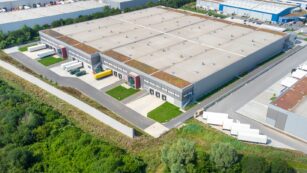The architecture industry stands as a monumental pillar of human achievement, blending artistry with engineering to shape the environments in which we live, work, and play. From soaring skyscrapers to sustainable homes, architects are at the forefront of building not just structures, but also communities, reflecting cultural values and pushing the boundaries of innovation.
Architecture Industry
The architecture industry plays a pivotal role in marrying aesthetics with functionality, essential for building sustainable and adaptive environments. This section delves deeper into the industry’s commitment to eco-friendly design practices and the embracing of technological innovations.
Eco-Friendly Design Practices
 Eco-friendly design practices in the architecture industry focus on reducing environmental impacts through sustainable materials and energy-efficient buildings. Architects incorporate features like solar panels, green roofs, and materials that are both recyclable and locally sourced. For instance, construction projects often use bamboo, reclaimed wood, and recycled steel to minimize ecological footprints. Moreover, the integration of advanced insulation techniques helps in significantly reducing the energy required for heating and cooling, affirming the industry’s dedication to sustainability.
Eco-friendly design practices in the architecture industry focus on reducing environmental impacts through sustainable materials and energy-efficient buildings. Architects incorporate features like solar panels, green roofs, and materials that are both recyclable and locally sourced. For instance, construction projects often use bamboo, reclaimed wood, and recycled steel to minimize ecological footprints. Moreover, the integration of advanced insulation techniques helps in significantly reducing the energy required for heating and cooling, affirming the industry’s dedication to sustainability.
Technological Innovations
Technological innovations continue to reshape the architecture industry, enhancing both the design process and the end products. With the advent of Building Information Modeling (BIM) systems, architects can create highly accurate virtual models of buildings, which streamline the planning and construction phases. Additionally, the use of augmented reality (AR) and virtual reality (VR) technologies allows clients to visualize their projects in detail before actual construction begins. These tools not only improve precision but also promote a more immersive planning experience, showcasing the industry’s forward-thinking approach.
Key Challenges Facing the Architecture Industry
Regulatory and Compliance Issues
 Compliance with ever-changing building codes and regulations represents a major hurdle for architects. Each jurisdiction may have unique requirements that affect design criteria, material specifications, and construction methods. For example, seismic zones demand specific engineering standards for earthquake resilience, while historical preservation areas require adherence to aesthetic and structural guidelines to maintain heritage. Architects must stay updated with these regulations to avoid legal complications and ensure the safety and durability of their projects.
Compliance with ever-changing building codes and regulations represents a major hurdle for architects. Each jurisdiction may have unique requirements that affect design criteria, material specifications, and construction methods. For example, seismic zones demand specific engineering standards for earthquake resilience, while historical preservation areas require adherence to aesthetic and structural guidelines to maintain heritage. Architects must stay updated with these regulations to avoid legal complications and ensure the safety and durability of their projects.
Economic Impacts on Construction
Economic factors significantly influence architectural projects. Budget constraints often lead architects to modify their designs or choose different materials. Market fluctuations can also affect the availability and cost of construction supplies, such as steel and lumber. In periods of economic decline, reduced investment in new projects can delay or cancel prospective developments. Conversely, economic booms might accelerate construction schedules, pushing architects and their teams to work under tighter timelines. These economic pressures underscore the need for adaptable and financially aware architectural planning.
Major Players in the Architecture Industry
The architecture industry hosts several influential firms that not only lead in design and innovation but also shape industry standards globally. These entities stand out due to their consistent delivery of cutting-edge projects and their pivotal roles in architectural thought leadership.
Global Influence and Innovations
-
 Foster and Partners, headquartered in London, exemplifies influence through its iconic skyscrapers and sustainable urban designs. Their work includes famous structures like Apple Park in California and The Gherkin in London. Gensler, based in San Francisco, operates worldwide with a strong emphasis on both aesthetic designs and functionality, as seen in the Shanghai Tower, the world’s second tallest building.
Foster and Partners, headquartered in London, exemplifies influence through its iconic skyscrapers and sustainable urban designs. Their work includes famous structures like Apple Park in California and The Gherkin in London. Gensler, based in San Francisco, operates worldwide with a strong emphasis on both aesthetic designs and functionality, as seen in the Shanghai Tower, the world’s second tallest building. -
BIG (Bjarke Ingels Group), with offices in Copenhagen and New York, is renowned for its innovative approach to sustainable architecture and projects like VIA 57 West in New York.
-
Kohn Pedersen Fox (KPF) specializes in high-performance, energy-efficient buildings that incorporate the latest technological advances. Examples include Hudson Yards in New York.
-
Zaha Hadid Architects, known for its futuristic and curvilinear forms, integrates eco-friendly materials and energy-efficient systems in projects such as the Beijing Daxing International Airport.
These firms contribute significantly to architectural discipline through their projects that often encapsulate advanced Building Information Modeling (BIM) and augmented reality (AR), enhancing both design precision and client engagement. As major players, they mirror the industry’s shift towards sustainable materials and the inclusion of green spaces in urban developments. Through their varied and innovative projects, these firms underscore the importance of adaptive design in current and future architectural practices.

